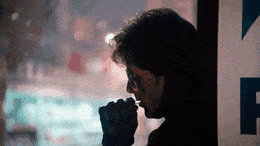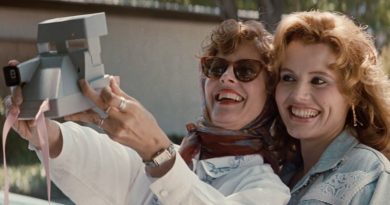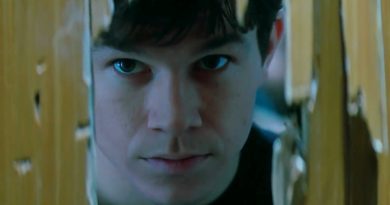Cobra at 35: An ’80s Guilty-Pleasure Action Film
Apart from Arnold Schwarzenegger, Sylvester Stallone was the other most popular and bankable action stars of the 80s. He already had great successes with Rocky III (1982), Rocky IV (1985) and of course, Rambo: First Blood Part II (1985). Both Rocky and Rambo characters made him a global cinematic icon. And the following year after he scored two of his among biggest hits of his career, he came up with another character that could potentially launch a lucrative franchise.
That character in question was Cobra a.k.a. Lt. Marion ‘Cobra’ Cobretti, a tough cop who carries a gun (a customised Colt Gold Cup National Match) emblazoned with a cobra art and wears aviator sunglasses. He likes to chew on a matchstick and yes, he’s good with memorable one-liners too (“You’re the disease, and I’m the cure”).
But before his take-no-prisoners Cobra character was born, it’s hard to believe that it was originally meant to be an action role with a… comedic side. Even the name of the character wasn’t called Cobra but rather a Pittsburgh cop named Elly Axel and the title of the film would be Beverly Drive. If that somehow sounds familiar, that’s because it would be later changed to Beverly Hills Cop — the 1984 hit action-comedy that catapulted Eddie Murphy into superstardom.
Stallone actually came close to playing Murphy’s now-iconic Axel Foley (after a change of name) character but instead of an action-comedy role, he wanted a more straightforward action type. Stallone even went as far as altering the script and asking for a bigger budget but Paramount didn’t share the same sentiment. They eventually parted ways but Stallone refused to give up and decided to take his proposed ideas to mould into a screenplay later known as Cobra.
Using Paula Gosling’s novel Fair Game (originally published as A Running Duck) as a source material (the same novel that would later inspire another big-screen adaptation in 1995 under the title of Fair Game starring Cindy Crawford and William Baldwin), Cobra was initially running at over 2 hours long as opposed to a scant 89 minutes.
Blame it on Top Gun, which opened a week before Cobra during the month of May in 1986. The Tom Cruise-Tony Scott film proved to be a huge hit during the opening weekend and fearing that Cobra‘s ultra-violent action vibe and longer runtime might ruin its box office potential, the studio (Warner Bros) ended up trimming the film off to a compact length. Their strategy — which was actually done at the last minute! — worked, resulting in a satisfying 3-day opening weekend with a then-impressive US$12.6 million during the first three days on the May 23-25, 1986 weekend. While it did make money with a worldwide total of US$160 million against a US$25 million budget, Cobra wasn’t big enough of a hit compared to the likes of Rambo: First Blood Part II, which grossed a much sizable US$300.4 million.
Having recently revisited Cobra, the shorter 89-minute length remained the biggest setback in the film. The film forgoes exposition in favour of a more stripped-down approach, which is basically a one-man battle (Stallone’s Cobra) against a murderous group of cult from an underground organisation simply known as “The New World”. Led by The Night Slasher (Brian Thompson), they terrorise the city by murdering the weak and in this case, it was young and pretty women. One of the potential targets happens to be a model named Ingrid Knudsen (Brigitte Nielsen, also Stallone’s then real-life wife), who is later placed under protective custody after she spotted one of the killers.
Frankly, the story is a tremendous bore with the antagonist part involving The Night Slasher and his cult organisation being reduced to mere ciphers. But what makes Cobra a guilty pleasure is Stallone himself, who is born to play such a no-nonsense, shoot-first-ask-questions-later kind of cop. The film features plenty of action: gunfights, fistfights and car chases with the latter involving Cobra’s souped-up, nitro-boosted 1950 Mercury are among the highlights here.

But I still like the opening scene the most, where Cobra sneaks into a supermarket and takes down a crazy gunman (Marco Rodriguez). At one point, Cobra took his time sipping a can of Coors beer and I liked the way he casually replied to the gunman, “Go ahead. I don’t shop here” after the gunman threatened to blow the place up. The opening scene sets the tone so well that the subsequent scenes (save for the thrilling car chase along the streets of Los Angeles) sadly pale in comparison.
Although Cobra was directed by Rambo: First Blood Part II George P. Cosmatos, Stallone reportedly served as the actual director in the film. Interestingly enough, Stallone happens to ghost-direct Rambo: First Blood Part II as well. Then in 1993 when Cosmatos made Tombstone, the otherwise troubled Western film was partially ghost-directed by Kurt Russell, who also led the cast as Wyatt Earp.
In 2019, Stallone decided to revisit Cobra by rebooting it as a potential TV series with Robert Rodriguez at the helm, who is no stranger to handling small-screen projects following his extensive experience in From Dusk Till Dawn: The Series.




